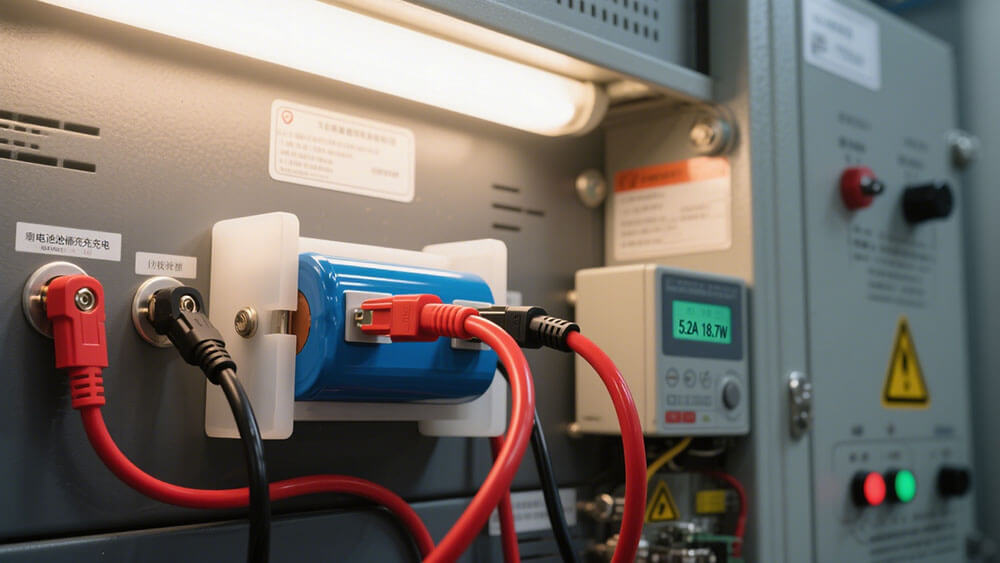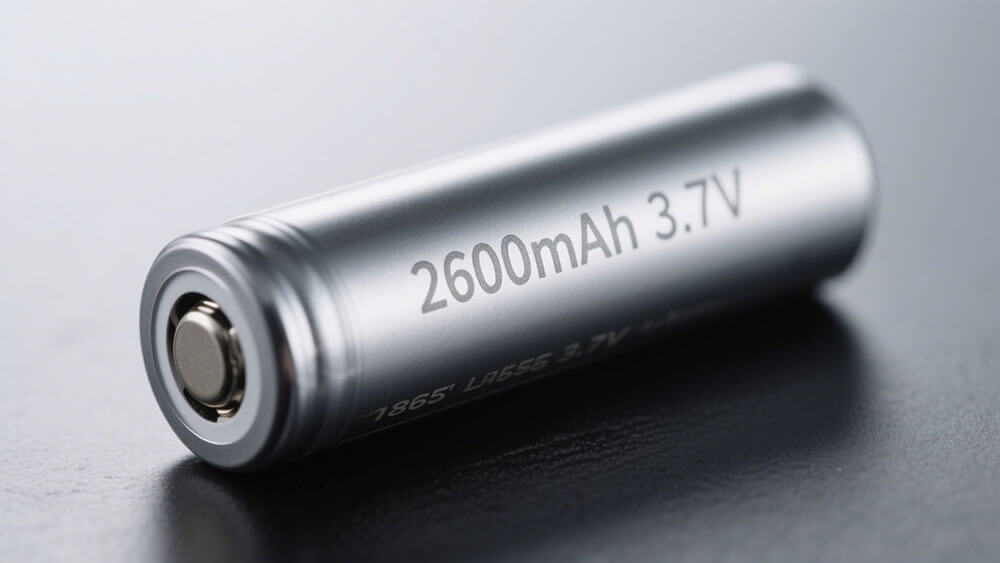
Aftermarket batteries give you cost-effective alternatives to OEM lithium battery packs, especially when you need replacements for industrial, robotics, or consumer electronics. Quality and safety can vary, so supplier selection matters.
OEMs held 65% of the lithium-ion market in 2023, but aftermarket batteries now see strong B2B adoption through offline channels like distributors and retailers.
Key Takeaways
Aftermarket batteries offer cost-effective alternatives to OEM packs, especially for industrial, robotics, and hybrid uses, but quality and fit can vary by supplier.
Prioritize safety and performance by choosing batteries with third-party certifications and test reports to ensure reliability and long lifespan.
Bulk buying aftermarket batteries can save money over time, but always verify compatibility and supplier reputation to avoid frequent replacements or issues.
Part 1: Aftermarket Batteries Overview

1.1 What Are Aftermarket Batteries
You encounter aftermarket batteries as alternatives to original batteries when replacing or upgrading lithium battery packs in industrial, robotics, or hybrid applications. These batteries come in two main forms: new and remanufactured. New aftermarket batteries use fresh cells and components, while remanufactured options rebuild used packs with tested cells and updated electronics. Both types serve as cost-effective solutions for B2B buyers who need reliable performance in sectors like industrial, robotics, and consumer electronics.
Asia Pacific leads global adoption of aftermarket batteries, holding over 45% market share due to strong manufacturing and electric vehicle growth. North America and Europe follow, driven by R&D and sustainability initiatives.
1.2 OEM vs. Aftermarket
Feature | OEM Hybrid Battery | Aftermarket Batteries |
|---|---|---|
Manufacturing Standards | Strict, certified, high-quality | Varies by supplier, less consistent |
Compatibility | Guaranteed fit and integration | May require adjustments |
Safety | Integrated protections | Depends on supplier’s controls |
Warranty | 8-10 years, strong support | Shorter, limited coverage |
Cost | Higher upfront investment | Lower price, more frequent replacement |
OEM hybrid battery packs use high-quality cells, precise assembly, and advanced safety features. You benefit from longer lifespan and fewer replacements. Aftermarket batteries offer lower costs but may not match the exact quality or fit, leading to more frequent replacements and potential installation challenges.
1.3 Types of Aftermarket Batteries
Aftermarket batteries cover a wide range of lithium chemistries and applications. You find options for SLI (Starting, Lighting, Ignition), auxiliary batteries for hybrid vehicles, and advanced lithium-ion battery packs for industrial and commercial use. Market segmentation highlights lithium-based batteries as dominant, especially in regions with strong government support and renewable energy integration.
Segmentation Category | Segments / Application Areas | Description |
|---|---|---|
End-Use Vehicle Types | Passenger Cars, Commercial Vehicles, Two-Wheelers | Batteries support ignition, lighting, and electronics in various vehicles. |
Customer Segment | Aftermarket, OEM | Aftermarket segment grows due to replacement needs and affordability. |
Application Types | SLI, Flooded, Auxiliary for EVs/Hybrids | Different batteries serve start-stop, auxiliary, and hybrid systems. |
Technology & Trends | Start-Stop, Electrification, Recycling | Demand rises for high-performance, sustainable batteries. |
1.4 Aftermarket Hybrid Battery
You see rapid innovation in aftermarket hybrid battery technology. New hybrid batteries, such as sodium-ion packs, deliver up to 300 amps peak power—twice that of many stock NiMH systems. These new hybrid batteries weigh under 40 lbs, about 50% lighter than typical NiMH packs, and maintain optimal voltage for improved fuel efficiency. Proven reliability exceeds 500,000 miles in diverse climates. Compared to traditional lead-acid batteries, aftermarket hybrid battery solutions offer longer lifespan, higher power output, and eco-friendly materials. You gain OEM-level reliability at a lower cost, making new hybrid batteries a smart choice for fleet upgrades and commercial hybrid applications.
Part 2: Choosing and Using Aftermarket Batteries

2.1 Performance and Safety
When you select aftermarket batteries for hybrid applications, performance and safety must be your top priorities. Industrial buyers expect batteries to deliver consistent power, long cycle life, and reliable operation in demanding environments. Leading testing organizations such as Mobile Power Solutions and Intertek provide comprehensive performance and safety evaluations for aftermarket lithium battery packs:
Mobile Power Solutions conducts tests for cycle life, rate capability, capacity, duty cycle, accelerated life, and storage analysis. Their destructive physical analysis and environmental condition testing (temperature, pressure, vibration, humidity) ensure batteries meet real-world industrial requirements. They hold accreditations like ISO/IEC 17025:2017, ISO 9001:2015, and AS 9100D, which guarantee high standards in testing quality and reliability.
Intertek offers safety testing that includes overcharge, short circuit, crush, puncture, and thermal abuse scenarios. Their performance benchmarking and failure analysis help you compare brands and prototypes. Intertek’s safety testing complies with ANSI, UL, IEC, SAE, UN, and IEEE standards, and their environmental testing covers temperature, humidity, and altitude.
Tip: Always request third-party test reports and certifications from your supplier. This step helps you verify that the batteries meet your operational and warranty expectations.
You should also consider the chemistry of the lithium battery pack. For example, NMC Lithium battery packs offer a platform voltage of 3.6-3.7V, energy density of 160-270Wh/Kg, and cycle life of 1000-2000 cycles, making them suitable for hybrid vehicles and robotics. LiFePO4 Lithium battery packs provide a platform voltage of 3.2V, energy density of 100-180Wh/Kg, and cycle life of 2000~5000 cycles, which is ideal for industrial and infrastructure applications. These characteristics directly impact the performance, safety, and lifespan of your hybrid battery systems.
2.2 Cost and Value
Cost savings drive many companies to choose aftermarket batteries, but you must balance price with long-term value and operational reliability. Bulk purchasing offers several advantages:
You reduce per-unit costs through economies of scale and volume discounts.
Consolidated deliveries lower shipping expenses and environmental impact.
Improved inventory management reduces the risk of stockouts and saves time.
Higher purchase volumes give you stronger negotiation power for better terms.
Long-term savings from bulk buying outweigh higher upfront costs by reducing replacement frequency and waste disposal.
Battery Type | Initial Cost Range ($) | Annual Maintenance Cost ($) | Estimated Lifespan (years) | Total Cost of Ownership (TCO) over 5 Years ($) | Key Savings Aspect |
|---|---|---|---|---|---|
Lithium-ion | 1,500 – 2,000 | 50 | 5-10 | 1,850 – 2,300 | Lower maintenance, longer lifespan |
Lead-Acid | 600 – 800 | 100 | 3-5 | 1,200 – 1,300 | Lower initial cost |
You see that lithium-ion batteries have a higher upfront cost, but their longer lifespan and lower maintenance requirements deliver good value over time. For hybrid fleets, robotics, and industrial systems, this means fewer interruptions and lower total cost of ownership. When you choose replacement batteries that meet safety standards, you also gain peace of mind and operational reliability.
Note: For companies focused on sustainability, aftermarket lithium battery packs can support your environmental goals. Learn more about sustainable battery solutions in our sustainability approach.
2.3 Pros and Cons
You must weigh the pros and cons of aftermarket batteries before making a purchasing decision. Consider the following factors:
Aspect | Pros | Cons |
|---|---|---|
Cost | Lower upfront price, bulk discounts, good value for large fleets | Potential for higher replacement frequency if quality is inconsistent |
Quality & Safety | Access to certified products with proper supplier vetting | Quality varies by supplier; risk of substandard batteries |
Compatibility | Wide range of options for hybrid, robotics, and industrial systems | May require adjustments or custom integration |
Warranty & Support | Some suppliers offer limited warranties | Shorter coverage than OEM; support may be less comprehensive |
Application Suitability | Suitable for hybrid vehicles, robotics, infrastructure, and more | Not all batteries fit every application; check specifications |
When you evaluate suppliers, look for certifications such as ISO 9001, RoHS, and CE. These certifications demonstrate a commitment to quality management and responsible manufacturing. Additional certifications like UL 1642, IEC 62133, and UN38.3 indicate compliance with international safety and transportation standards. The certification process involves rigorous testing, compliance documentation, and ongoing audits, which help you identify reliable suppliers and reduce risks.
Tip: Always confirm that your supplier can provide documentation for all relevant certifications. This step protects your business from liability and ensures the batteries are suitable for your hybrid, robotics, or industrial applications.
Compatibility and liability are critical for B2B buyers. You must ensure that the replacement batteries integrate seamlessly with your existing battery management system (BMS). For more information on BMS operation and components, see our battery management system guide.
If you need customized solutions for hybrid or industrial applications, consult with our experts for OEM/ODM battery customization. Our team can help you select batteries that deliver good value, safety, and performance for your specific needs.
You should follow these steps for hybrid battery supplier due diligence:
Track social and environmental risks in hybrid supply chains.
Use digital battery passports for hybrid traceability.
Require independent audits for hybrid compliance.
Pilot hybrid batteries in non-critical roles to validate safety.
Seek cost-effective recommendations for hybrid projects.
FAQ
1. What should you check before buying a hybrid aftermarket battery pack?
You should verify certifications, supplier reputation, and compatibility with your hybrid system. Request third-party test reports and ensure the battery meets your application’s safety and performance needs.
2. How do aftermarket lithium battery packs impact hybrid fleet operations?
Aftermarket lithium battery packs can reduce costs and downtime for your hybrid fleet. You gain flexibility, but you must ensure quality and safety standards match your operational requirements.
3. Can Large Power customize hybrid battery solutions for your business?
Yes. Large Power offers customized hybrid battery solutions for industrial, robotics, and infrastructure applications. You can consult their experts for tailored lithium battery pack designs.






